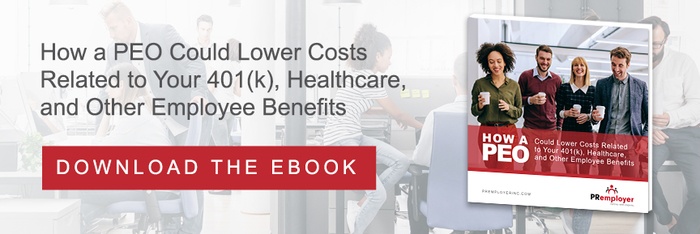
Professional employer organizations, better known by the acronym PEOs, are outsourcing entities that provide a range of HR-related services to small- and medium-sized businesses. By acting as an employer of record for tax purposes, PEOs can give their business partners access to healthcare plans and benefits that would normally not be accessible to such small companies.
At the same time, driving growth is a primary objective for many SMBs. Those that partner with a PEO grow 7% to 9% faster than average, according to the National Association of Professional Employer Organizations. Likewise, the cost of HR administration for these same businesses is 35% lower. With the time and resources you save by outsourcing human resources to a PEO, you can adjust your focus to actionable business growth initiatives and providing competitive benefits. But first, you need to understand how PEOs price their services.
Assessing PEO Pricing for Your Business
As you’re selecting which PEO to integrate into your business infrastructure, there are several factors to consider: which services they provide, their professional reputation, and their pricing structure. You want to make sure the cost you pay for a PEO gives you access to the specific type and quality of services you need.
When comparing prices from different PEOs, you may come across cost estimates that use the format “x dollars per year per employee.” However, this oversimplified equation ignores some important pricing factors and doesn’t consider the real costs involved. In reality, there are three critical components that will determine how adding a PEO impacts your company’s budget:
1. Employee Employment Status
One factor that will affect the pricing for your PEO’s services is the status of your personnel, or what percentage is full-time versus part-time. This is partly due to the fact that management and benefits differ between these classifications. The pricing presented to you upfront will be based on the number of full-time equivalent (FTE) employees at your firm. This means the cost typically will decrease in proportion to the percentage of your workforce that is part-time.
2. Existing Benefit Offerings
Pricing is also dependent on what benefits you currently offer and budget for and what you plan to add. For example, if you’re not already budgeting for 401k retirement plans or healthcare benefits, then the price tag may seem higher than if you’re already budgeting for these benefits.
Even if you’re currently providing benefits through your company, you will likely find cost savings by partnering with a PEO. Because PEOs are serving numerous companies and hundreds of employees simultaneously, they can negotiate better rates for employee benefits. Ultimately, you are able to afford quality services and benefits that typically would be out of reach if you were trying to access them on your own as a small- or medium-sized business.
3. The Location of Your Company
Another factor to consider is that payroll taxes and withholding rules vary among states. For example, seven states do not have an income tax at all, so companies do not have to worry about state tax withholding. Two other states, New Hampshire and Tennessee, do not have withholding either because they only tax on interest and dividend incomes, not wages. Additionally, worker’s compensation fees can also vary between states, with New York City and Chicago as two examples of locations with notably high tax rates and worker’s compensation fees.
Depending on the state where your company is located, the pricing of your PEO may be higher because of these factors. If your company exists in multiple states, adhering to tax withholding rules becomes even more complicated, which could increase the value, and cost, of your PEO’s services.
Bundled vs Unbundled Pricing
In order to get a better understanding of your PEO’s price structure, you can ask for the “unbundled rate,” as opposed to the "bundled rate" that presents the information as "X amount per employee per year." The unbundled rate will show you state and federal unemployment insurance costs, along with the current taxes your company is liable for and other variants. Using this detailed pricing data, you can make an informed decision about which PEO offers the best value for your company.
Once you've determined that the pricing structure of a PEO is acceptable, you must ensure the PEO is a good fit for your company. That comes down to more than mere dollars and cents. The best PEOs are committed to offering services that are not only cost-effective but also comprehensive, so you can rest assured your HR and other administrative tasks are being handled with competence, dedication and integrity.

